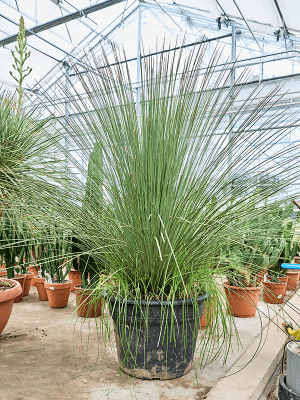
Dasylirion longissimum
Stem
4DALOSS70
Origin
The Olea europaea, better known as the olive tree, has its origin in the eastern Mediterranean region, specifically in countries such as Iran, Turkey and Syria. The olive tree has a long history of over 6000 years and is often associated with symbols of peace, wisdom and hope in literature. Over many centuries, it has spread to other countries around the Mediterranean and around the world.
Characteristics
The olive tree is an evergreen, woody plant and can reach heights of 10 to 20 meters. It has a twisted and knotty appearance with greyish silver leaves and small, fragrant white blossoms. The fruit, commonly known as olives, are oval or round in shape and change colour from green to purple as they ripen. It is renowned both for its aesthetic value as an ornamental plant and for its fruit and the olive oil derived from it.
Care
The olive tree is a robust plant that survives in a wide range of weather conditions, but it prefers a sunny, slightly damp environment with well-draining soil. Watering should be done sparingly, and it is important to allow periodic drought conditions between waterings. Pruning may be necessary to maintain the desired shape and to increase fruit production. The tree is fairly tolerant of various soil pH levels, but performs best in slightly alkaline to neutral soils.
| Phone NL | +31 885 014 000 |
|---|---|
| Phone NGC | +31 885 014 014 |
| Phone FR | +33 (0)130 760 344 |